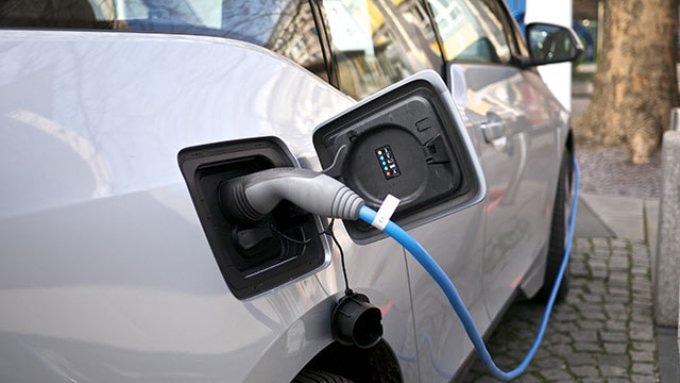Apr 15 2019
In determining the effect of electric vehicle (EV) adoption on the environment, a new study has provided evidence that EV adoption could enhance overall air quality and reduce carbon emissions.
 Credit: Northwestern University
Credit: Northwestern University
A study at the Northwestern University has determined the differences in air pollution produced from battery-powered EVs and internal combustion engines. The scientists discovered that although it may seem that their electric power is produced from combustion sources, EVs have a net positive effect on climate change and air quality.
In contrast to many of the scary climate change impact stories we read in the news, this work is about solutions. We know that climate change is happening, so what can we do about it? One technologically available solution is to electrify our transportation system. We find that EV adoptions reduces net carbon emissions and has the added benefit of reducing air pollutants, thereby improving public health.
Daniel Horton, Study Senior Author, Weinberg College of Arts and Sciences, Northwestern University
The research work has been published in Atmospheric Environment on Friday, April 5th, 2019. Horton is an assistant professor of Earth and Planetary Sciences in Northwestern’s Weinberg College of Arts and Sciences. The first author of this study is Jordan Schnell, who is a postdoctoral research fellow with the Ubben Program for Climate and Carbon Science in the Institute for Sustainability and Energy at Northwestern.
The scientists used an emission remapping algorithm and air quality model simulations to determine the differences between the two types of vehicles. Using these methods, they thoroughly analyzed two automobile- and power emission-related pollutants, namely, ozone and particulate matter. These pollutants are the main constituents of smog and could possibly cause various health problems, for example, asthma, emphysema, and chronic bronchitis.
The researchers explained the complexity of changes to air pollution chemistry in detail taking into account the following multiple variables:
- Potential EV adoption rates
- Production of EV power supply, including the current combustion-dominant mix, enhanced emission-free renewables, and combustion-only sources
- Geographical locations
- Seasons and times of day
Ozone levels reduced nationwide in simulations of warmer weather months. However, in the winter months, ozone levels increased moderately but are much lower than summer because of a chemical reaction that takes place in a different way during the period of reduced winter sunlight.
Across scenarios, we found the more cars that transitioned to electric power, the better for summertime ozone levels. No matter how the power is generated, the more combustion cars you take off the road, the better the ozone quality.
Jordan Schnell, Institute for Sustainability and Energy, Northwestern University.
Particulate matter (also known as “haze”) decreased in the wintertime but exhibited more variations with respect to location and power generating mechanism. Places with more coal-fired power in their energy mix, for instance, had an increase in haze in summer. However, places with clean energy sources experienced extreme reductions in human-induced haze.
“We found that in the Midwest, the increased power demands of EV charging in our current energy mix could cause slight increases in summer particulate matter due to the reliance on coal-fired power generation. However, if we transition more of the Midwest’s power generation to renewables, particulate matter pollution is substantially reduced. In the Pacific Northwestern or Northeast, where there is already more clean power available, EV adoption—even with the current energy mix—will decrease particulate matter pollution.”
This study was financially supported by the Ubben Program for Carbon and Climate Science and the National Science Foundation (grant number CBET-1848683).